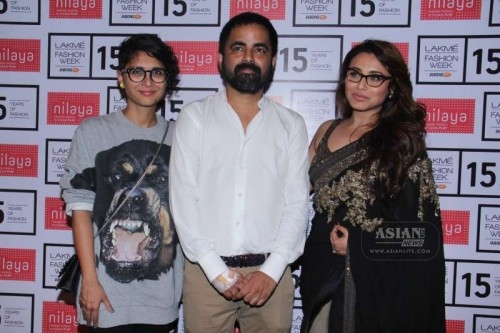
By Nivedita
Sabyasachi Mukherjee, whose sartorial creations, marked by traditional fabrics and techniques, have made him a globally recognised name in the world of design, believes that national clothing has the power to foster nationalism.
He says the youths’ appreciation of Indian handloom calls for revival of the craft.
“It’s a fragmented society and nothing fosters nationalism like national clothing, so one day out of week if we start wearing something Indian, then we will make India more proud,” Mukherjee told IANS on the sidelines of Lakme Fashion Week summer-resort 2015.
“Also, imagine the livelihood that we could give to so many people at grassroots level if the consumption of Indian textile will go up,” he added.
The designer feels that in a democratic country like India, one cannot force people to wear a certain kind of clothes, but supporting a movement of wearing handloom clothes for a day can bring revolution.
“Our country is a large democracy and so, wanting to wear what you want to wear should be a fundamental right. You can’t really push people to do what they want to do or what they don’t want to do, but if you can coax or urge people to support such a movement, a lot of people would automatically connect to it,” he added.
And by that, he does not mean only Indian outfits.
“Tying a sari has nothing to do with handloom. If you can’t wear Indian clothes, you can wear western clothes in Indian textiles,” he said.
Mukherjee, who started his label ‘Sabyasachi’ in 1999, earned the distinction of being one of the few names in the history of Indian fashion to participate at fashion weeks in Milan, New York and London.
He has also styled for some of the popular Bollywood actresses, including Tabu, Shabana Azmi, Aishwarya Rai, Sushmita Sen and Kareena Kapoor. Among the current crop of Bollywood’s ladies, he has got patrons in Deepika Padukone and Kangana Ranaut, and among international actresses Renée Zellweger and Reese Witherspoon have sported his label.
Asked about how youths take the handloom and textile culture in today’s modern time, the designer, who believes that “Indian women look beautiful in Indian clothes”, said: “The exposure levels of youth are very high today. They log on to the internet and find out the best in trend.
“I believe that when your curiosity gets quenched very early in your life, you want to come back to your roots and I think youth of India is very favourable and not averse at all to wear handlooms.”
On that front, he has a message for aspiring designers too.
“If you want to be designer of consequences anywhere in the world, you have to capture your country. Everyone abroad is looking for Indian sensibility, so an Indian designer automatically has no choice, but to look upto India for inspiration.
“I think if you want to build something global, you have to build something indigenous context and I think that is very important.”
Indeed, that’s what has worked for Sabyasachi.